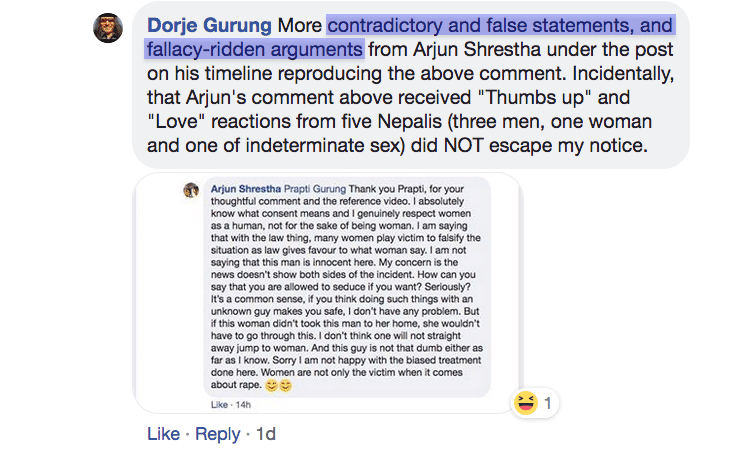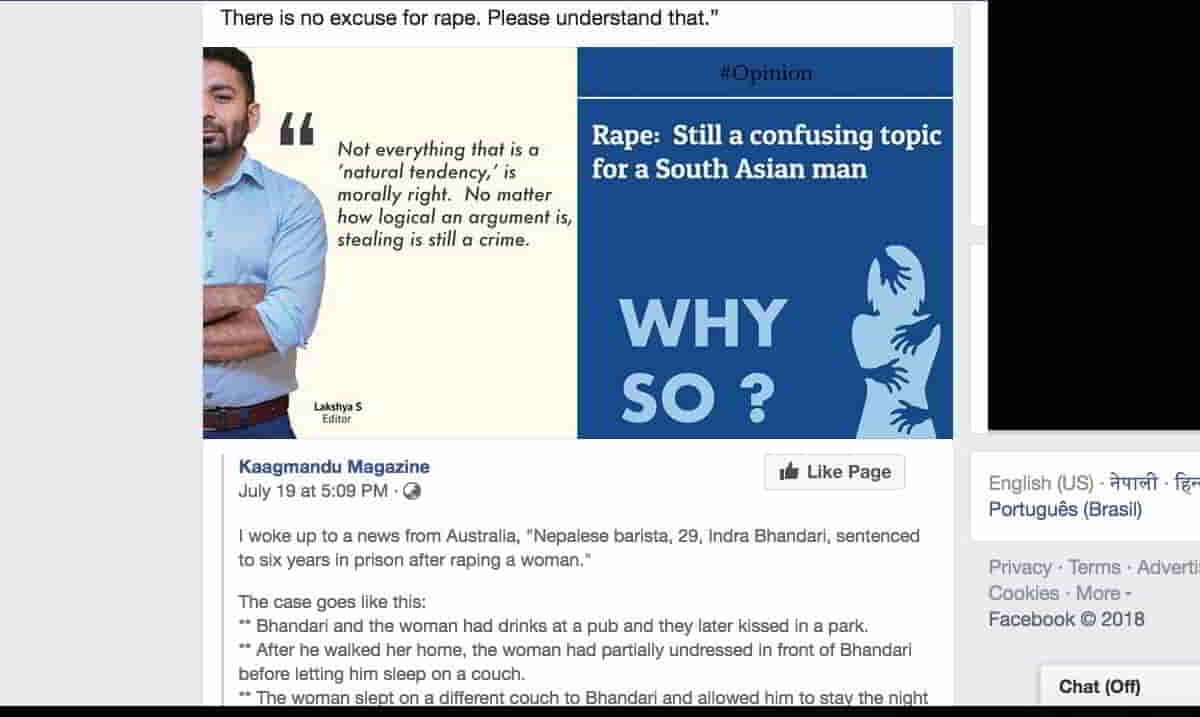
With some Nepali men, you can take them out of Nepal but you can’t take Nepal out of them.
I have come across examples of this again and again and again. I came across two recently.
This one is about the victim-blaming attitude of Nepali men when it comes to women-victims of rape. (In Hooray Hooray Its a Holi Holi Day…For Some I detail the victim-blaming attitudes of Nepalis when it comes to sexual harassment of girls and women during Holi, the festival of color.) Sadly, our highly patriarchal society and abysmally poor quality of education, which teaches only the most rudimentary skill of memorization and regurgitation of facts and figures, is to blame for this attitude. Sex education in Nepal, for example, as far as I know, is still severely limited.
Anyway, the incident centers around the recent case of a Nepali man found guilty of raping an Australian lady and jailed for six years. (Click here and here for news reports.) A Facebook page calling itself Kaagmandu Magazine made a long post about consensual sex and also went into the detail of some “dos and don’ts” for the benefit of the Nepali boys and men. A preface (see below) clearly described the reason behind the post.
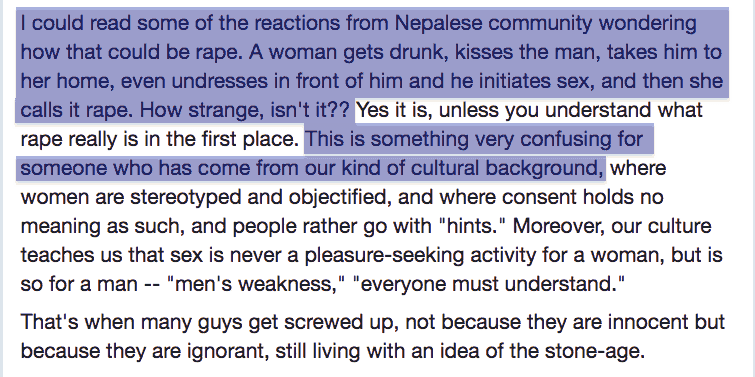
Incidentally, according to the news articles, he raped her after they had both gone to sleep — she woke up to him raping her.
And lo and behold, two Nepali men living in Australia made just the exact argument that the Kaagmandu Magazine admin suspected Nepalis have a tendency to.
A Facebook friend of mine shared Kaagmandu Magazine’s post on her timeline and that’s how I came across it all.
Incidentally, I have not bothered to redact the names in this reproduction because the post is public and everyone can access it.
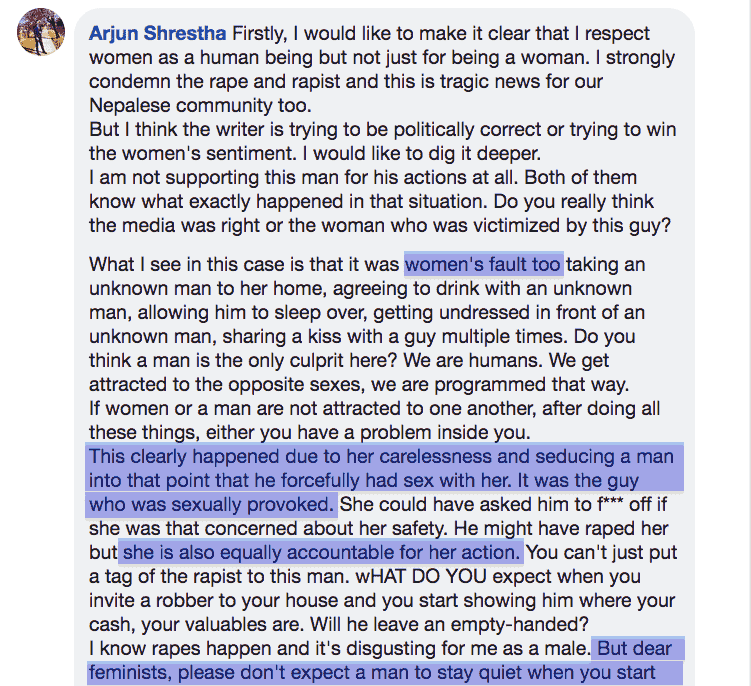
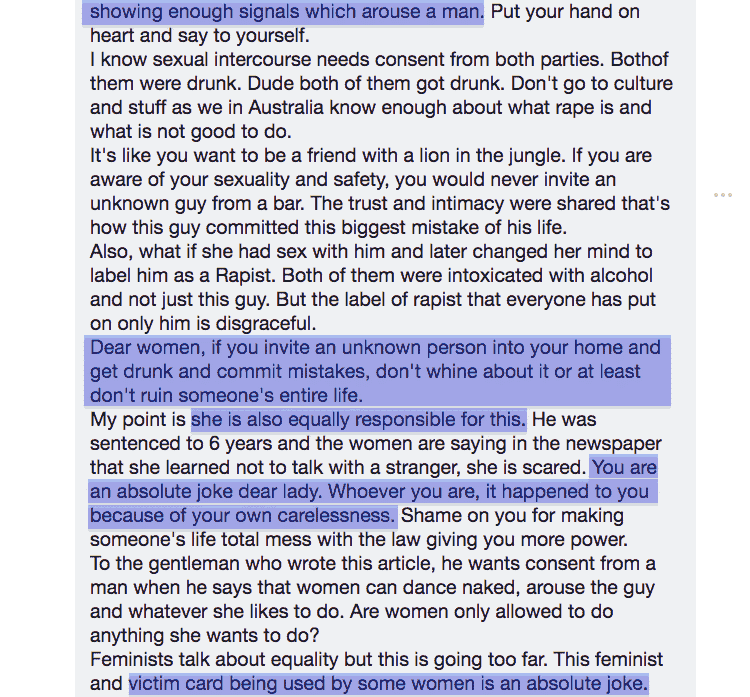
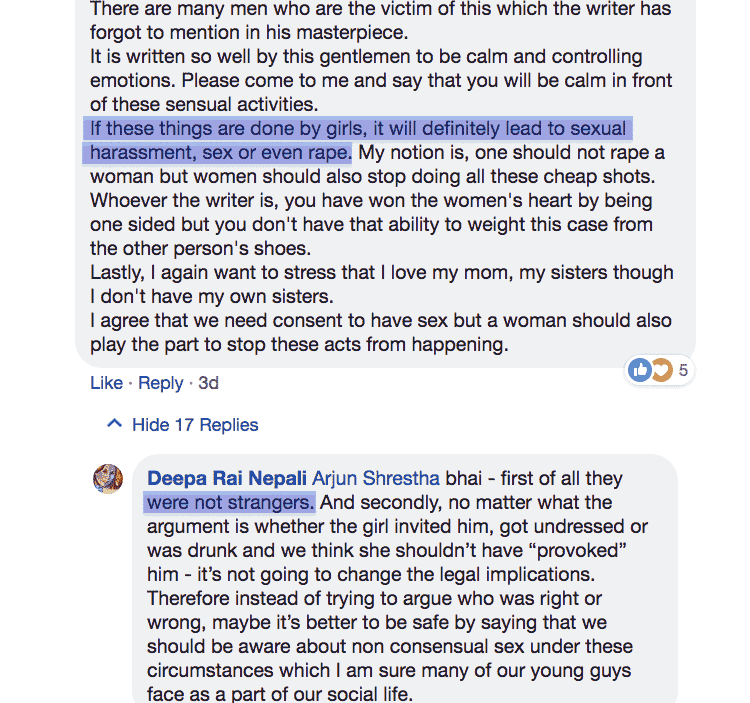
The crux of his fallacy-ridden argument is that she is also responsible for her being raped because she “sexually provoked” (aroused) him to such a point that he had no choice but to rape her (while she was asleep might I point out, again).
Arjun responded to Deepa with a single sentence. It was clear that he didn’t really understand where he had gone wrong with his opinion. I commented saying how his comment was “full of contradictions and fallacies” and how he blamed the victim for the crime.
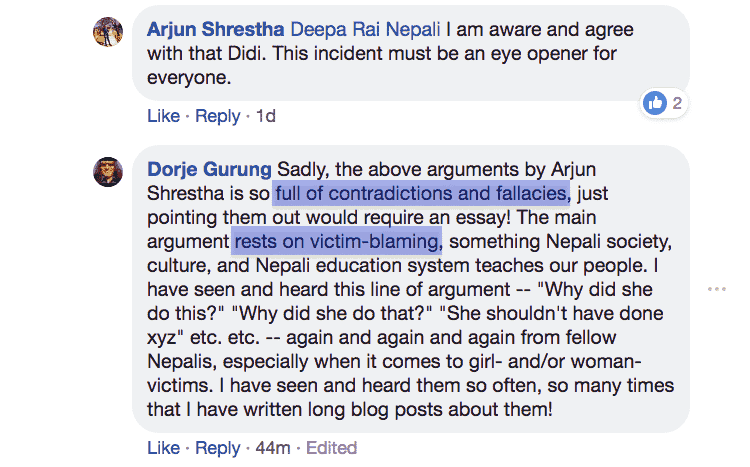
I discovered that he had also reproduced his comment on his Facebook timeline. In it, a Nepali woman had pointed out the issues but, even there, he didn’t seem to have understood them. (You’ll find a reproduction of that and other exchanges farther down.)
So, I took a screen shot of his response to her and reproduced it in yet another comment. I also noted how five Nepalis had reacted to his comment with “Thumbs up” and “Love”.
He then came back with this, which is basically a rehash of his original comment.
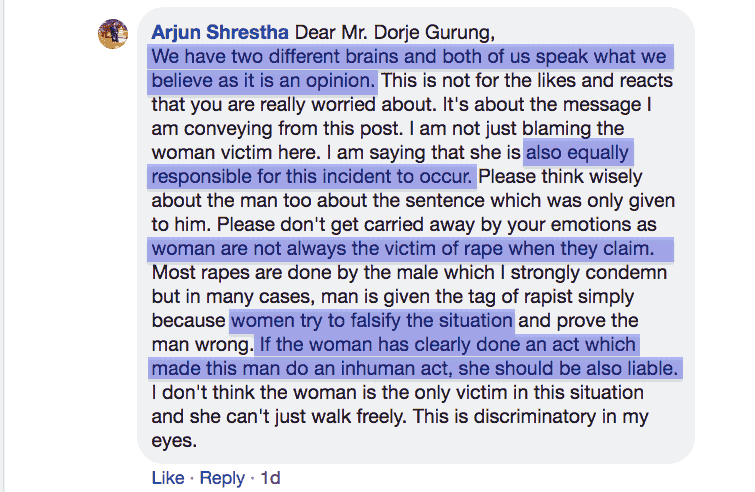
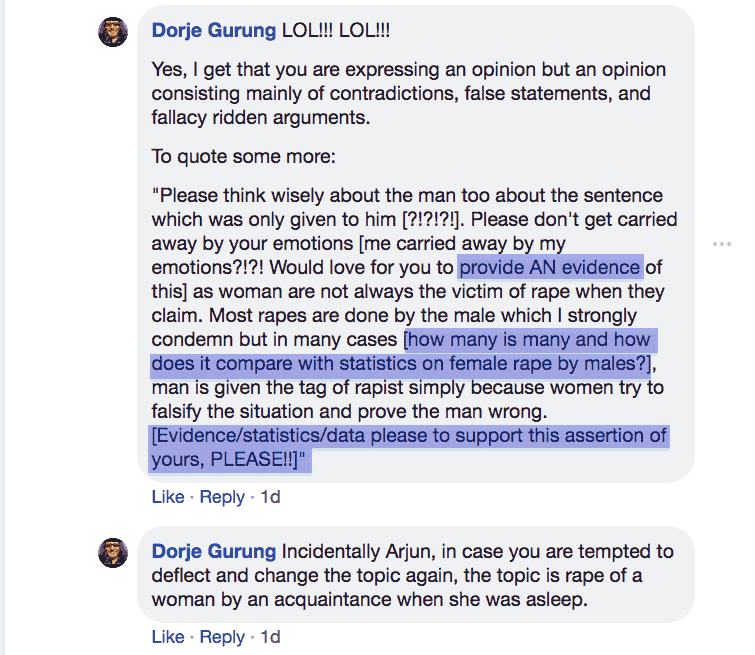
To my requests for evidence and data, he responded with a deflection (to talk about the man being jailed “for 6 years”) and refocused the conversation to “male rape”!
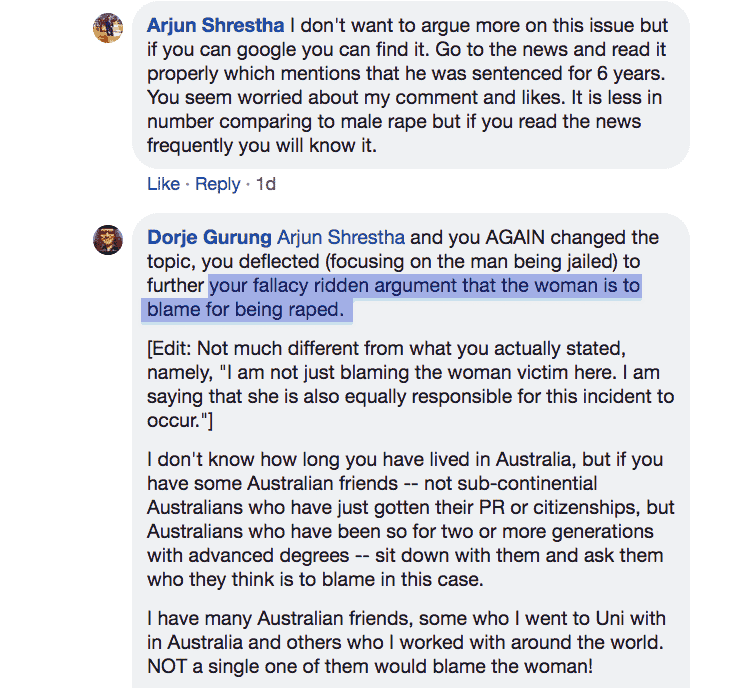
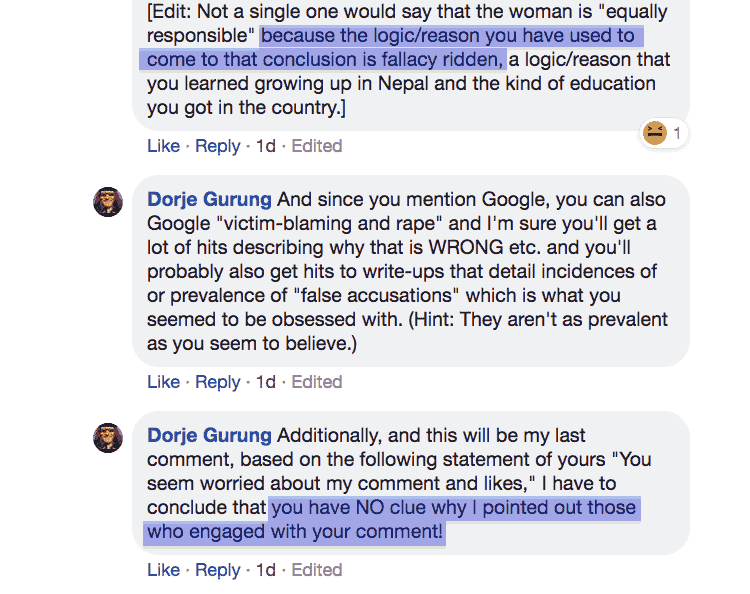
This time, instead of responding to my comments, he did something that I have never had anyone discussing an issue on social media do: he PMed me with his phone number! I guess he actually must have seriously believed that I would pick up my phone and call him and discuss this over the phone were I living in Australia! Of course, even were I in Australia, I wouldn’t have, and definitely not from Nepal! No way Jose!!
Clearly, he did not seem to understand most of what I was saying! And so, it would have been just a waste of my time to have that discussion elsewhere, which is also what I told him!
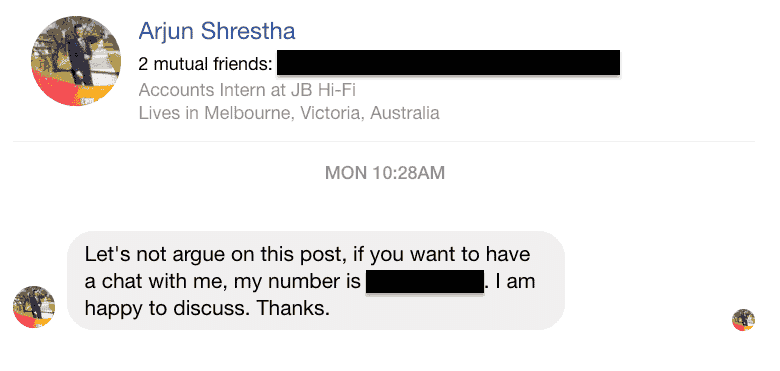
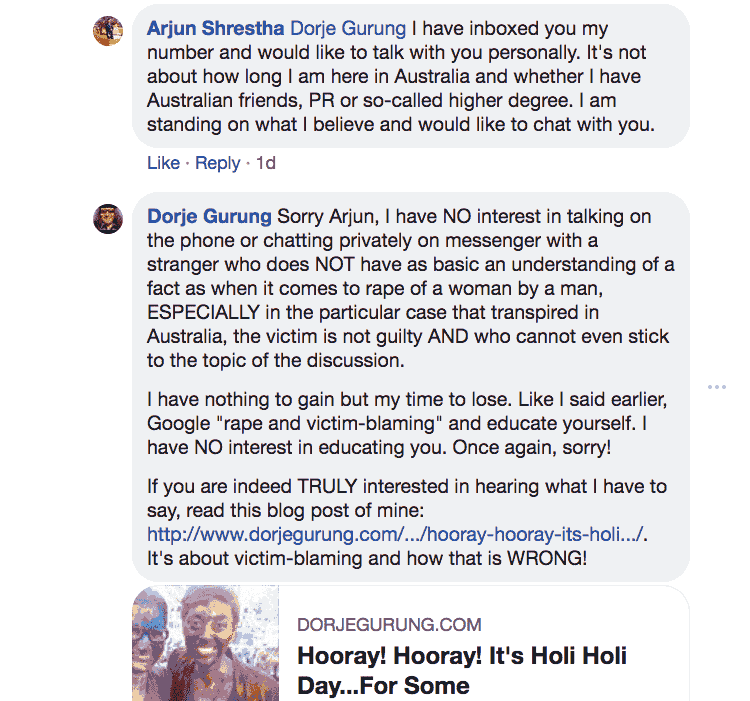
And then, what I have seen happen with fellow Nepalis happened with him too! He took what I said personally and felt demeaned “by dragging other bullshit”!
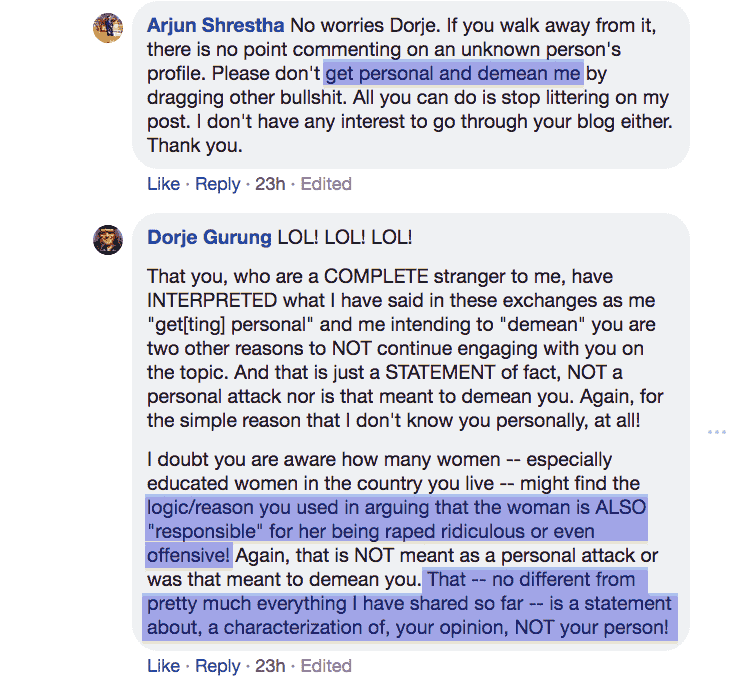
And this is where the second Nepali commented, using the word rape in a very flippant manner. He appears to also live in Australia. He was one of the three that “Liked” Arjun’s original comment.
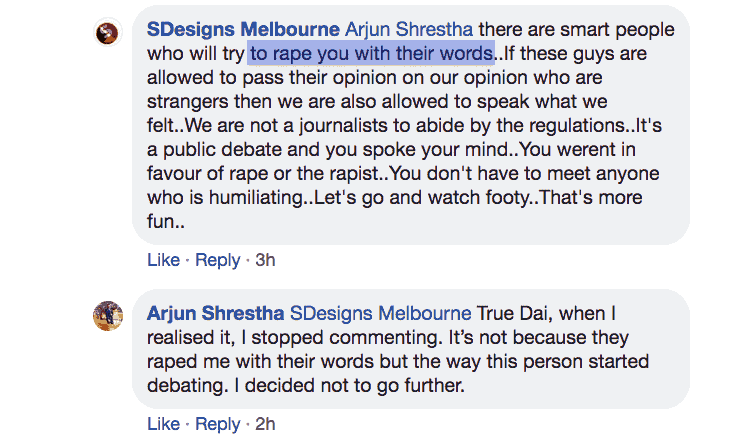
What I don’t know, and what could well be the case, is that the rapist may be Arjun’s friend!
Anyway, in the discussion under Arjun’s own post someone called Prapti did point out a couple of the issues with his arguments. Again, I didn’t redact the names because the post is public and anyone can view it!
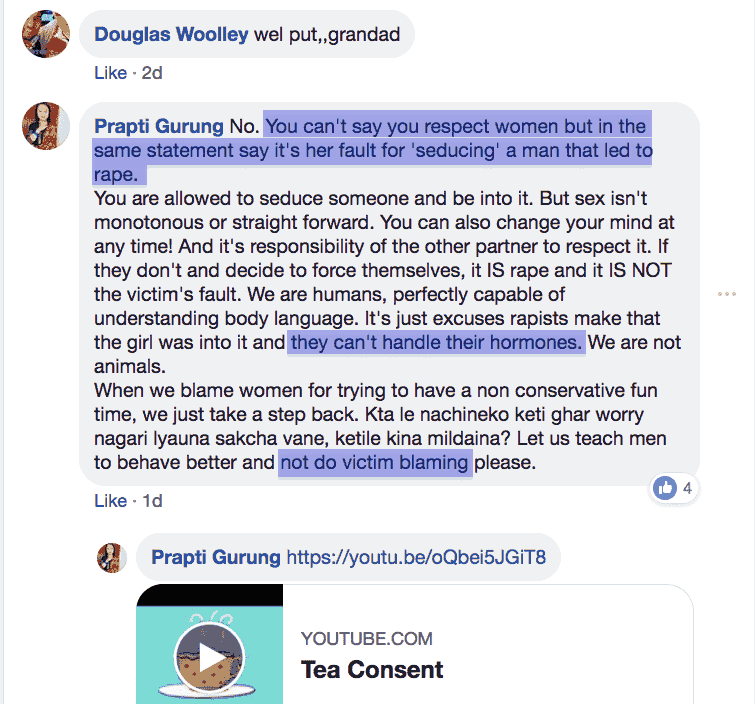
But Arjun just didn’t get it!
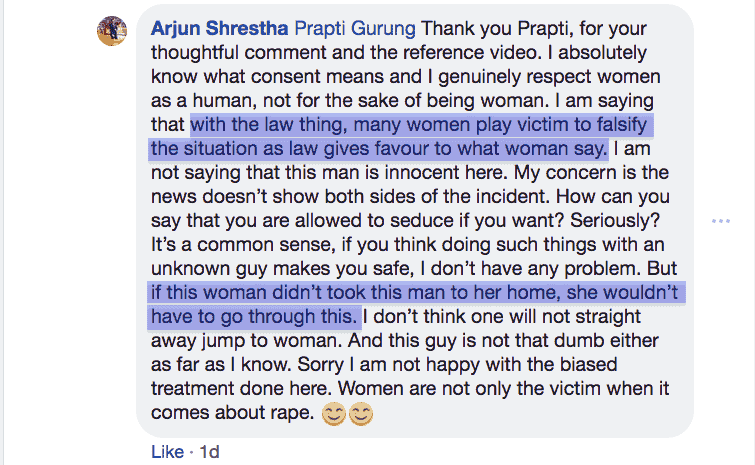
The lady even had data to refute an assertion of his!
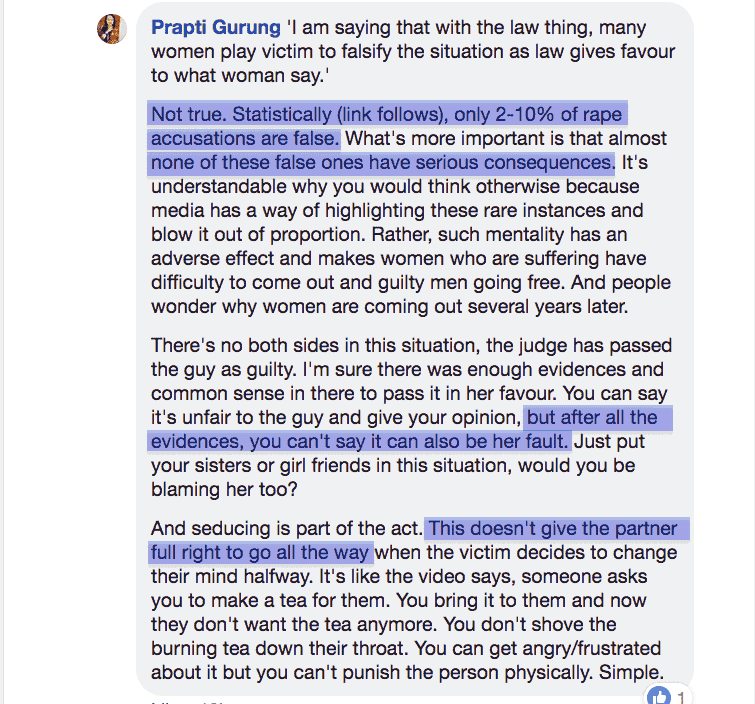
And another user Bibek, pointed out the issue with his analogy!
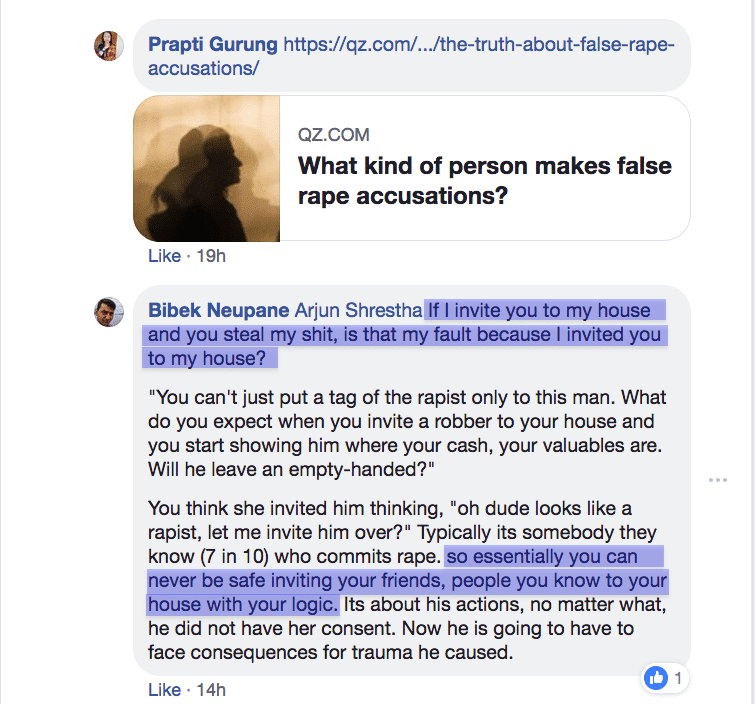
Going by the reactions to Arjun’s post, he seems to have many Nepali friends who think like him.
As of now, twenty-one people have reacted to the post, a majority of them Nepali men, and three have shared it. Eighteen of those reactions are “Thumbs up” and only three “Surprise.” One of those who shared the post was SDesigns Melbourne, writing “I also agree with this piece of opinion by Arjun Shrestha..”.
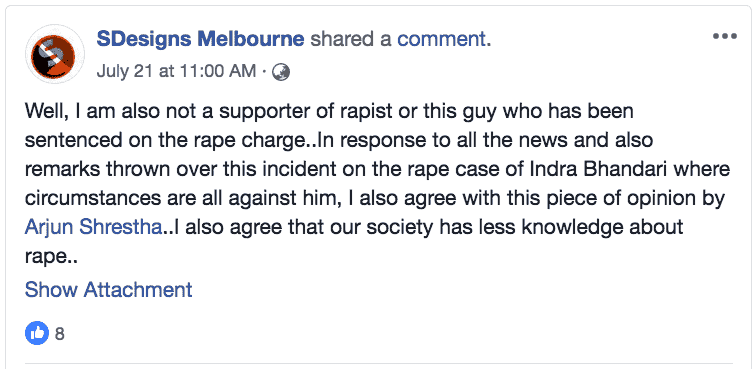
Clearly, he is a little confused. What is commendable about this post, however, is his admission that “our society has less knowledge about rape..” As for those eight who reacted to the post, all were Nepali — six men and two women.
To be sure, Arjun and SDesign, including those who reacted favorably to Arjun’s comment and his post as well as to SDesigns Melbourne’s share of Arjune’s post, aren’t unique in their victim-blaming attitudes towards a rape victim (as well as towards female victims of other forms of violence). For more such Nepalis, I would recommend following this link to the Kaagmandu Magazine post and reading the comments underneath. Sure there are Nepali men and women who agreed with Kaagmandu Magazine’s post. But, you’ll also find Nepali men like Arjun!
All that, again, is a commentary on Nepali men’s attitude towards — and understanding of — rape and how they view girls and women, and therefore also a commentary on our culture, society and quality of our education.
In our society casual sexism and everyday display of misogyny and abuse of girls and women is the norm. Our society provides much less opportunities to our girls and women, but then puts the blame for their lack of academic and professional success etc. on their gender. As a matter of fact, we blame the women for a number of other things that they shouldn’t be blamed for, such as for not giving birth to a son or for giving birth to an intersex child etc. We, as a society, believe in and insist on adhering to gender roles, which again, holds back our girls and women.
It is no wonder that our girls and women have the kind of laxed attitude towards domestic violence from their husbands and from their mother-in-law. It is no wonder that Nepali girls and women hesitate to come forward with stories of their abuse by men in their lives, forget about rape by a family member. It is no wonder that the biggest killer of girls and women of reproductive age is suicide etc.
Even now in the time of #MeToo movement, a movement that was a long time in coming, we have Nepali men either studying and/or working and living in Australia who still don’t know enough about rape, what it’s about, how it mostly happens, why it happens, and its consequences for the victim! Of course, it’s entirely possible that those two and many of the others who reacted positively to Arjun’s comment and post, instead of being students at tertiary educational institutions or being professionals, are accompanying spouses with little or limited qualifications, living in a Nepali or Indian Subcontinental bubble in Australia. They might live on Australian soil but, mentally, socially, and intellectually, they may as well be living in Nepal.
Now, to thwart any Whataboutism arguments from fellow Nepalis: yes, I am fully aware of the fact that non-Nepalis also make the mistake of blaming the victim in cases such as this! And NO, that does not make the argument right, or even acceptable, far from it!
What do you think?
References
Added after the publication of the blog post because of their relevance.
- Nirmukta (August 27, 2011). The Status Of Women As Depicted By Manu In The Manusmriti.”[t]he Manusmriti also known as Manav Dharam Shastra, is the earliest metrical work on Brahminical Dharma in Hinduism. According to Hindu mythology, the Manusmriti is the word of Brahma, and it is classified as the most authoritative statement on Dharma.””Although no details of this eponymous author’s life are known, it is likely that he belonged to a conservative Brahman class somewhere in Northern India.”And some of the ways women are depicted, are very sexist and misogynistic. It’s therefore understandable that boys and men growing up in a predominantly Hindu culture and society also end up being sexist and misogynistic, like the guys above. [Added on July 29, 2018.]
- Time (Jan. 15, 2019). I’ve Talked With Teenage Boys About Sexual Assault for 20 Years. This Is What They Still Don’t Know. [Added Jan. 31, 2020.]

